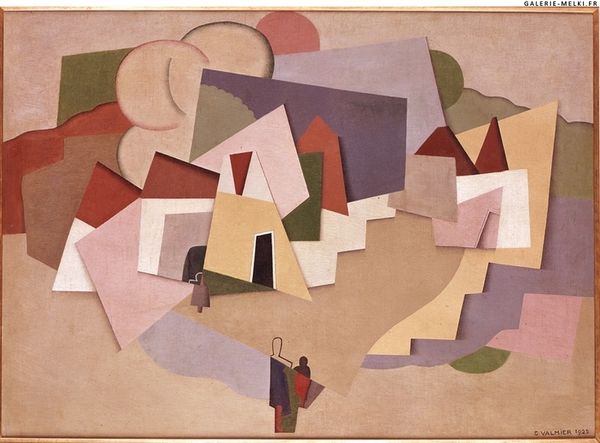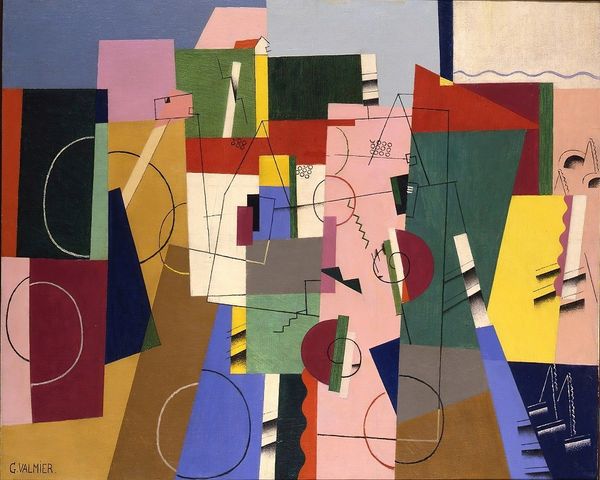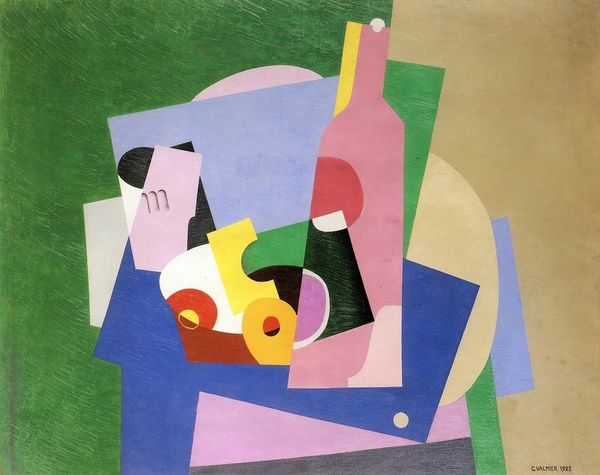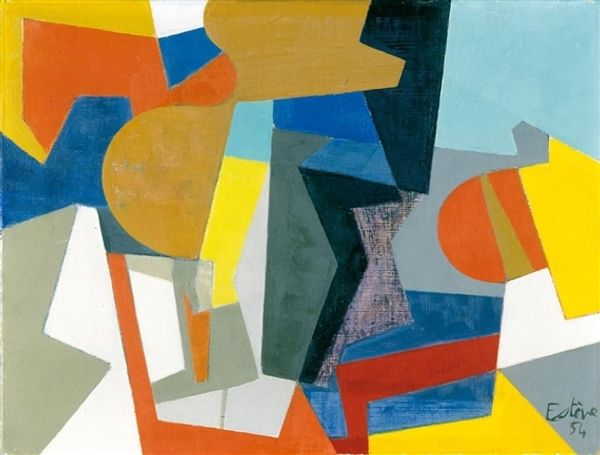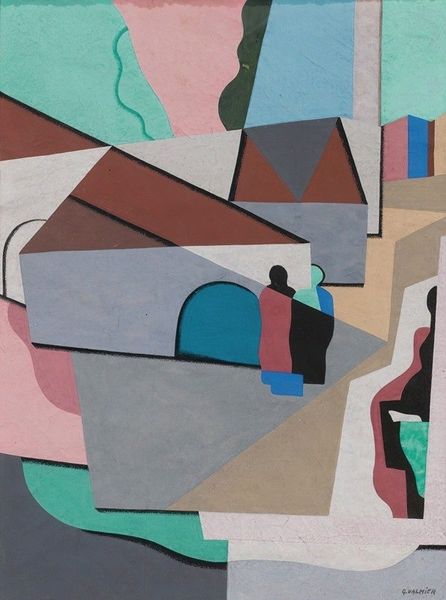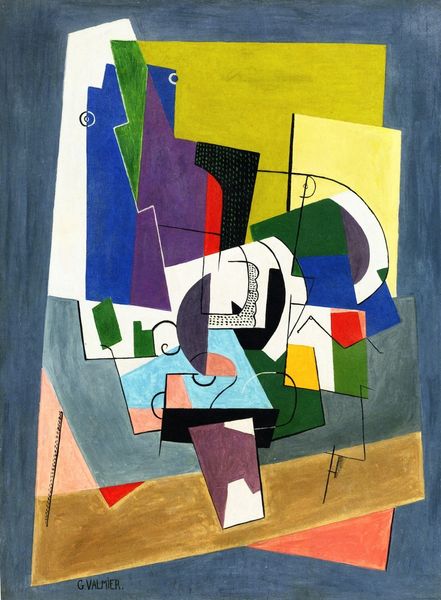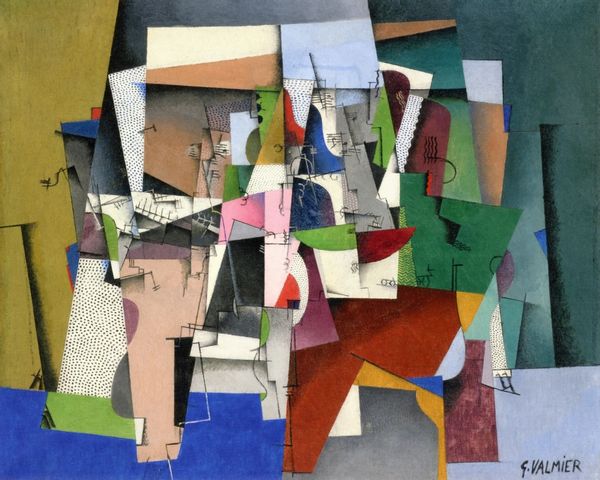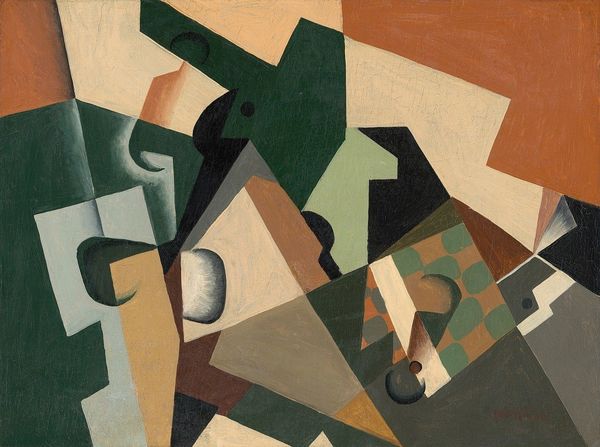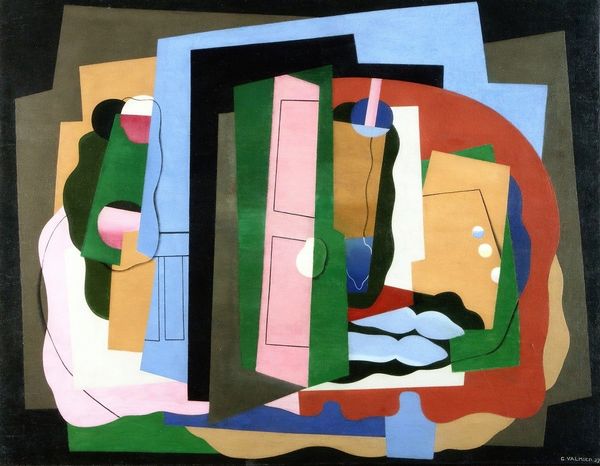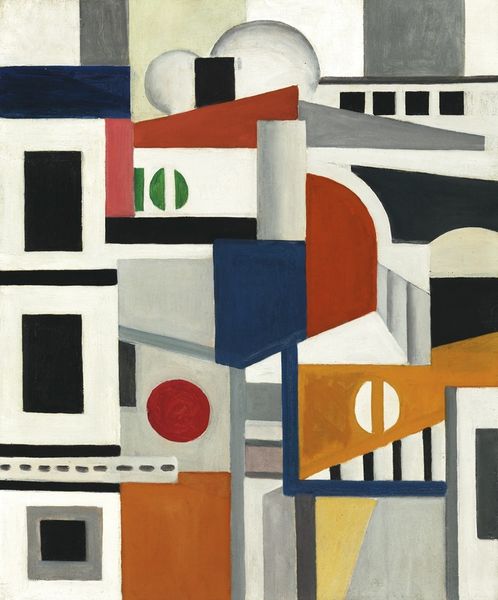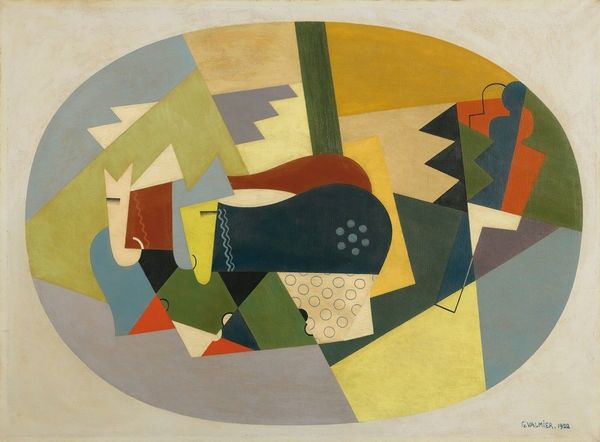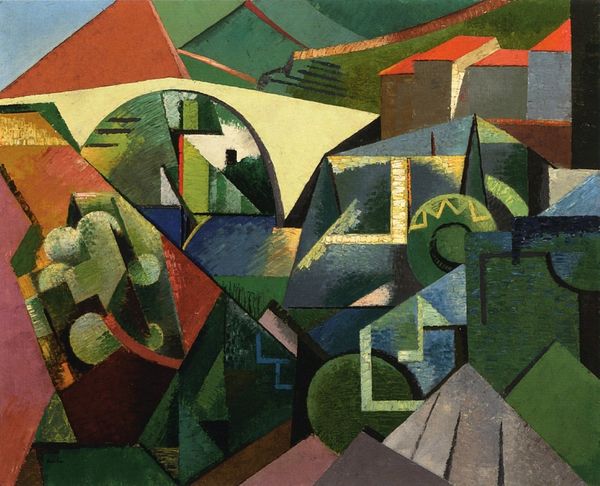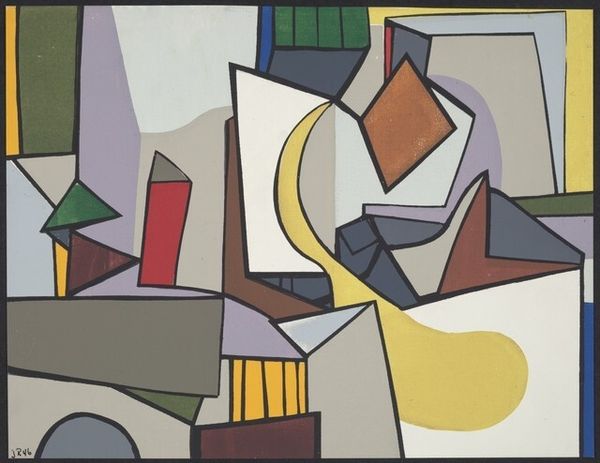
painting, oil-paint
#
cubism
#
painting
#
oil-paint
#
abstract
#
geometric-abstraction
#
cityscape
#
modernism
Copyright: Public Domain: Artvee
Georges Valmier made this oil painting, ‘The Village Fun Fair’ sometime in the 1920s. It’s a jumble of geometric shapes and hazy figures, capturing the spirit of a festive gathering. Valmier made this work in France, and the painting style is typical of the interwar period. The use of abstraction allowed the artist to create a playful image of collective leisure, while also referencing the rise of industrialization with the use of geometric form. It feels like a reflection on the modern experience of entertainment. The funfair is an example of the culture industry, and Valmier seems to be asking whether these new forms of entertainment are liberating or stultifying. To understand Valmier's approach, one could research the popular entertainments of the period, the institutional debates around art, and the range of political opinions held by artists in France during this time. Ultimately, the meaning of this painting resides as much in the context of its creation as it does in the image itself.
Comments
No comments
Be the first to comment and join the conversation on the ultimate creative platform.
